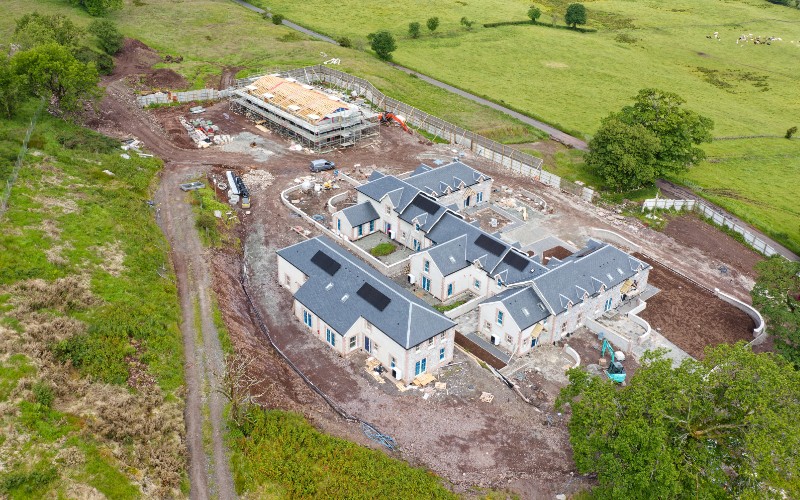
Many large landowners have the potential for residential development on their land, either as a build to let or build to sell project. Getting to the point of being able to break ground in Scotland however, is becoming more and more complicated.
The Scottish Government has recently eased their environmental targets, but the goal of achieving net zero by 2045 remains in place, and one of the key target areas for achieving this is housebuilding.
Since 1 April 2024 new homes in Scotland cannot be fitted with gas or oil boilers (limited exceptions apply), and there is a current target that all homes must have switched to zero-emission heating systems by 2045. This is where heat networks come in.
With a heat network, rather than individual heat sources in each property (e.g. a boiler), a shared energy centre is utilised providing a low carbon system which supplies heat and hot water to multiple properties. A network can be anything from one building (e.g. a block of flats) to large networks spread across a wider area. In some countries, these networks are large enough to heat towns and cities. Currently in Scotland, you are more likely to come across a heat network which serves a few properties. This can be as part of a new development, or where existing buildings such as a steading/courtyard have been converted into residential dwellings.
There are rules in relation to heat networks, how they can operate, and who can operate them. The rules are not particularly straightforward, but many are not in force yet.
The regulations do however give a fairly clear indication of what the Scottish Government will expect in the future, and the likely direction of travel in this area. This includes a licencing requirement for suppliers. Detailed legal advice from the outset is therefore important to ensure any project does not run into expensive difficulties. It is also important to give some thought to practical considerations, particularly where there is the expectation that some, or all, of the properties within the network will be in separate ownership.
It is anticipated that licence holders will have broad powers in order to allow them to operate a network, however these provisions are not yet in force, and are subject to change. Proprietors already have significant powers in terms of property law which, with some forward planning, should help facilitate these projects.
The location of the energy centre is a key consideration. The more properties that the centre serves, the bigger it will need to be, so it is important that you identify potential sites early. This is particularly the case if you are looking for it to be powered by an onsite renewable project. If you are looking to sell some of the plots but retain control of the energy centre, this will need to be factored in and either ownership, or access rights retained.
Beyond that, it will be important to regulate the relationship between properties on the network. Once the first property is sold, it becomes significantly harder to change any rights or obligations.
This is particularly relevant in relation to the infrastructure. A heat network pumps heated water and distributes this to each property in the network (which can control its own internal temperature). The water goes back into the boiler to be used again.
The pipe network therefore is of paramount importance and will cross ownership boundaries. Will everyone have the obligation to maintain the pipes? Will everyone have the right? Those two scenarios are surprisingly different and there is no right or wrong answer but when developing a project, you must decide. It may be appropriate that the pipe network become common property, owned by all of the properties in the development, however it may be your preference to own the pipe network (with sufficient servitude rights to operate) depending on your long term plans.
That doesn’t mean that you need to be responsible for all of the costs associated with the maintenance obligations. All properties within the network will have a vested interest in the upkeep, and on that basis, it is reasonable that they share in the costs. However, whilst the consumption costs will need to be allocated on a per user basis, the same does not apply for maintenance costs, this could be per property. Again, there is no right or wrong answer to this, but you need to decide, and this may have an impact on potential buyers.
Big changes are coming for the sector, and there are significant opportunities for landowners looking to develop whilst minimising the environmental impact – but there are also several variables to consider. Forward planning at the outset can save you significant time, and money, in the long run.
For more information on the opportunities and challenges relating to heat networks, please contact Cameron on 0131 624 6808.
Originally published in Scottish Land and Estates’ LandBusiness Magazine – Issue 92, Autum 2024
